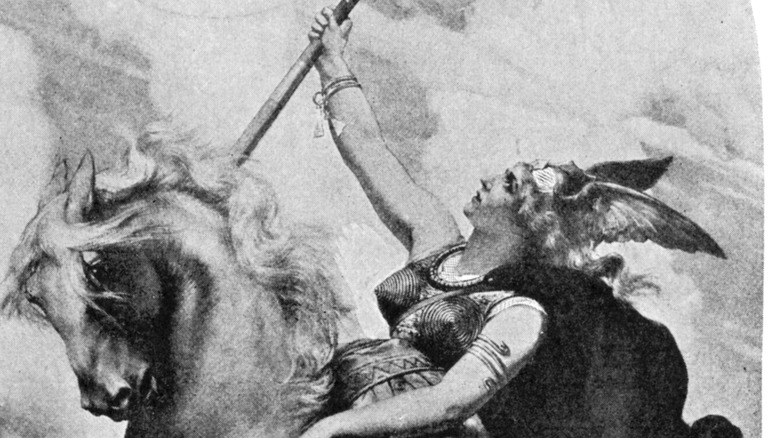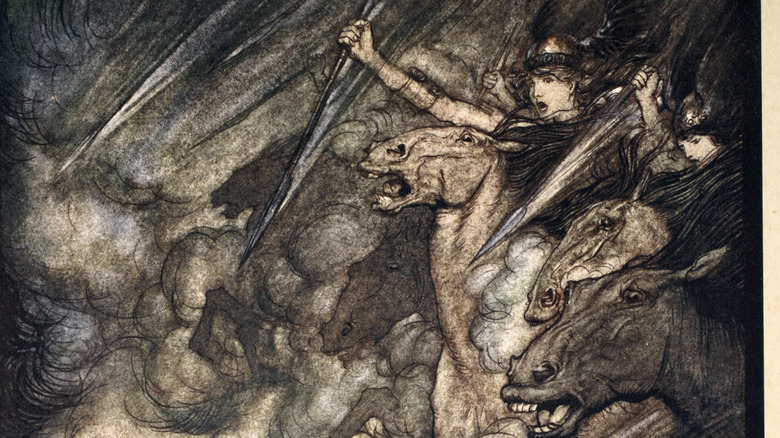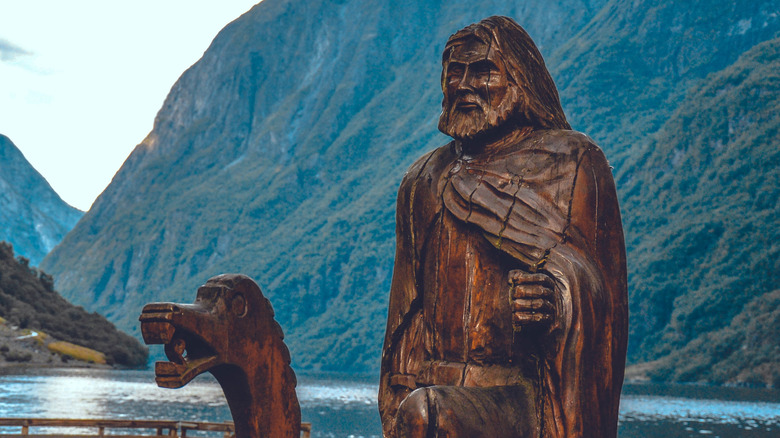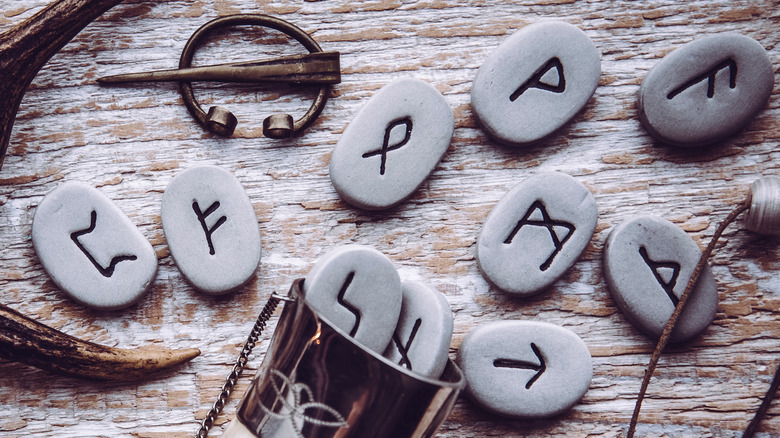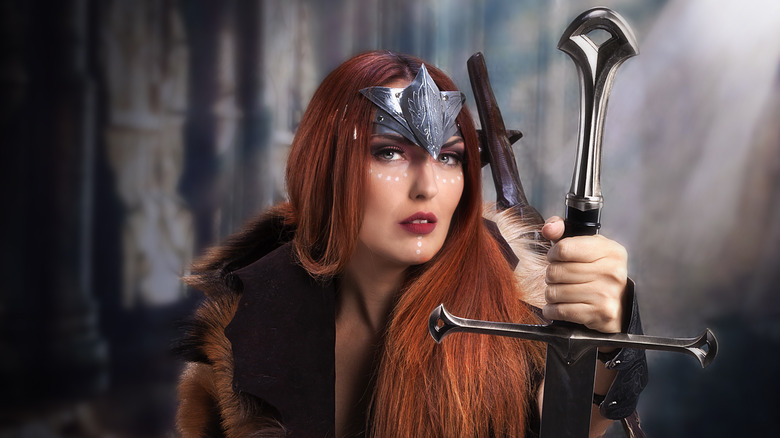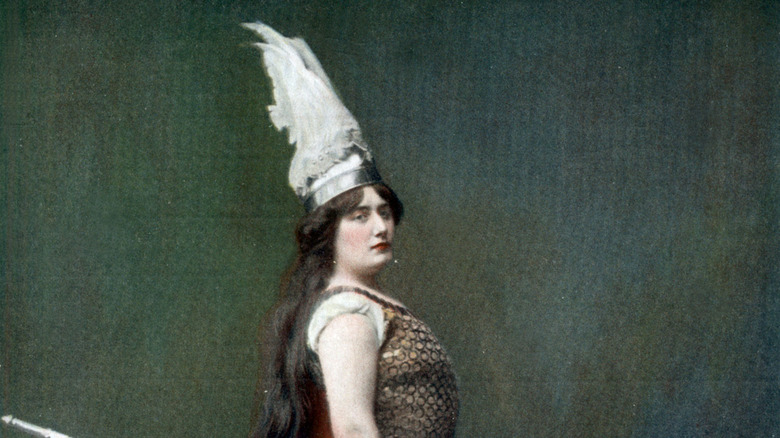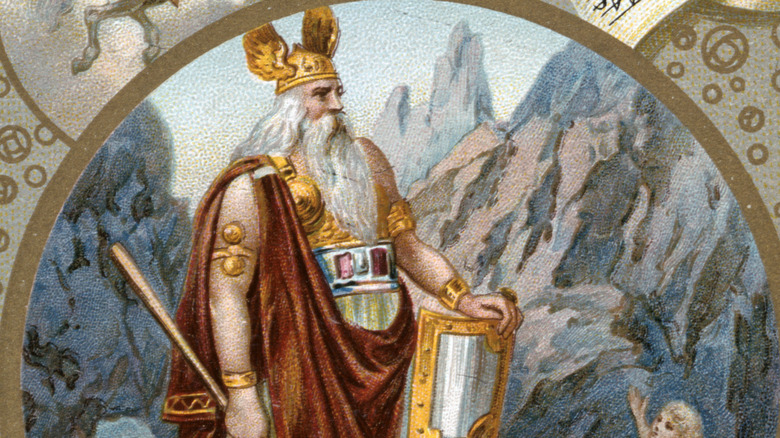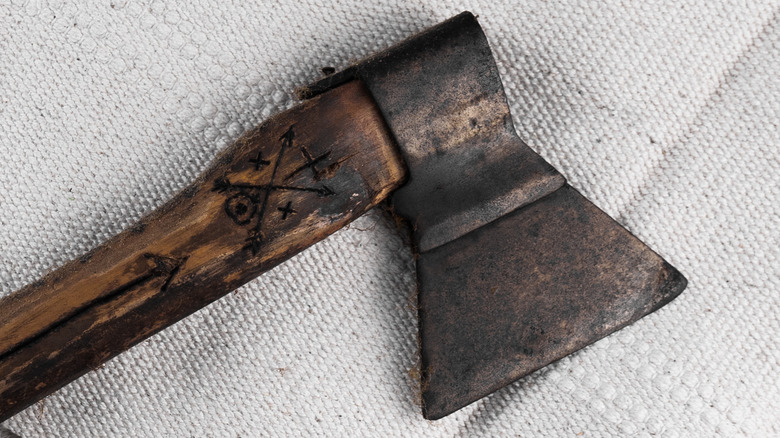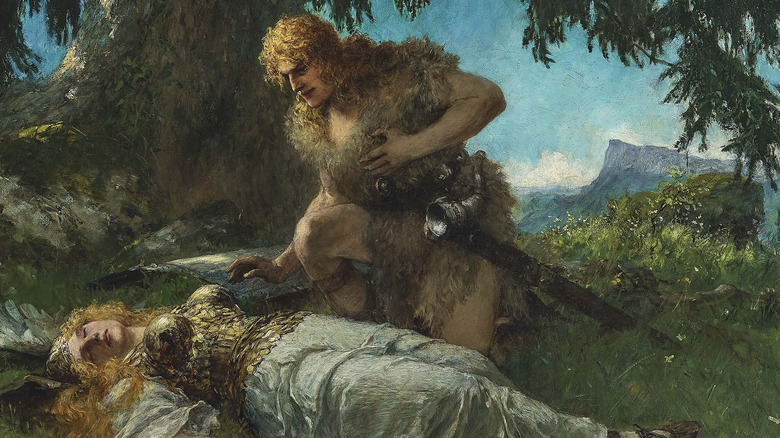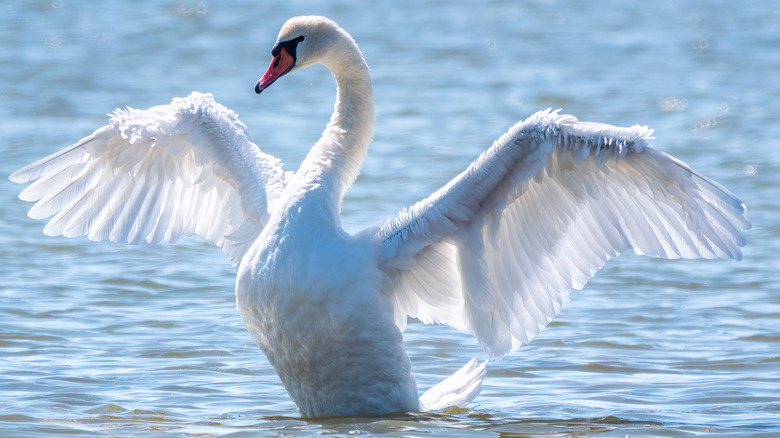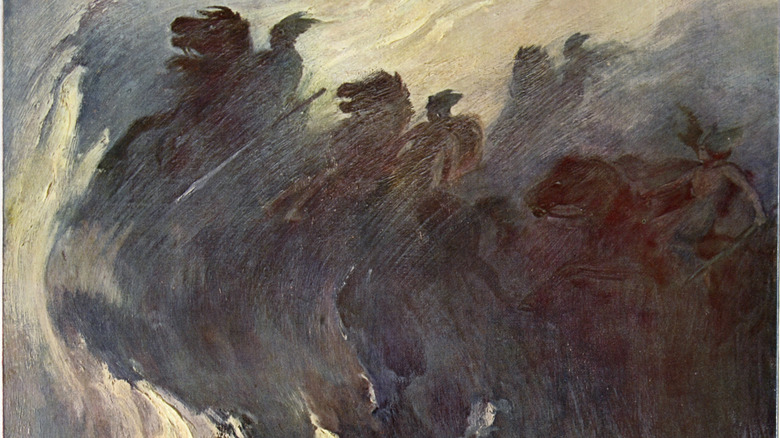The Myth Of The Valkyrie Explained
Valkyries have appeared in many forms across ancient mythology, often depicted as a formidable group of Viking warriors. An all-female fighting force, they have gained considerable notoriety for their fierce loyalty to each other as well as to Odin, the king of the Norse gods. They have featured in mediums such as films and comics from Marvel and operas by the notable composer Richard Wagner.
They are sometimes portrayed as having a soft and submissive side, with their main purpose being to defend and deliver worthy dead Viking warriors from the battlefield to the afterlife. Even after, they continue to serve men by bringing them their meat and beer in the hall of Valhalla, the Norse version of the afterlife. But the valkyries also have an extremely dark edge to them, one not often seen in popular culture, where they exercise considerable agency over the lives of warriors and often use gory, blood-drenched means to decide who triumphs and who perishes. Below the many dimensions of the valkyrie are fleshed out in full.
Who were they?
According to the source World History, the valkyries (a word meaning "chooser of the slain") are an all-female warrior caste depicted in numerous Norse myths and legends. They are often shown carrying weapons while riding ferocious animals such as wolves and wild boar, ready to tend to and take the most worthy dead warriors to Valhalla. Once warriors have reached Valhalla, the legends say that they will stay beside Odin's side and fight with him during Ragnarok, a series of calamities that cause the destruction and rebirth of the world. According to legend, the valkyrie will also stay loyally at Odin's side for eternity when that day comes.
The valkyries only oversee one realm of the afterlife, one in which they not only serve vanquished warriors but sometimes become their lovers. Other realms include Hel, Folkvangr, the Realm of Ran, and the Burial Mound. Folkvangr is overseen by Freya, the wife of Odin, who keeps half of the war dead for herself before allowing the valkyries their share. The Realm of Ran is said to be the ultimate destination for those who drown at sea, while Hel is where people go if they die of old age or sickness. The Burial Mound is the tomb and very final resting place of anyone who has died, no matter the cause.
Where did they come from?
The valkyries originated in Norse mythology at an unknown point in time, but oral traditions were passed down among successive generations and eventually codified by chroniclers such as the 12th- to 13th-century writer Snorri Sturluson (via World History). The former source was based on earlier works of mythology, while the latter drew on verses of Viking poetry. The shift from oral to written sources from the 11th century came when literacy arrived in the region due to the spread of Christianity, resulting in the two main sources of Viking mythology, the "Prose Edda" and the "Poetic Edda."
It's not fully clear when the idea of the valkyrie first entered Viking myth-making, although the concept mutated over time. Initially they are thought to have been similar to the Keres, creatures from ancient Greek mythology that gorged themselves on the bodies of those killed in battle. Furthermore, rather than select and escort only the most worthy to the afterlife, the valkyries were depicted as "death demons" that dragged souls off into the next world (per World History). With time they evolved from this into slick, disciplined figures that embodied traditionally masculine traits such as prowess in battle and the ability to wield weapons, all while embodying more traditionally feminine aspects like beauty and elegance.
What did they look like?
Nineteenth-century artists such as Peter Nicolai Arbo have depicted the valkyrie as part of a terrifying and fearless hoard, riding into battle while wielding spears, bows, and arrows, and wearing armor and helmets with horns (such as in "Valkyries: The Wild Hunt of Odin" and "Valkyries: Valkyrien," cited in Stylist). This includes Freya, the wife of Odin and leader of the valkyrie, who is portrayed as both a peaceable maiden in flowing golden dresses with long red hair (via Mythopedia), as well as a warrior riding a horse through the clouds, dressed in chainmail while brandishing a spear and a spiked shield and galloping through the clouds on a black horse.
Amulets and runestones found in Viking graves depict the valkyrie with both traditionally feminine traits — such as dresses and long fair hair knotted into ponytails or hanging loose — along with masculine ones like drinking beer from horns. Some of these trinkets show Odin's valkyries riding eight-legged horses (such as his steed Sleipnir), while others show women wearing dresses and aprons, which allow them to have bare arms and fight with sword and shield.
Women in combat
The valkyrie is part of one of many ancient mythologies that show women fighting in the same battles as men. Such women were depicted in Greek as well as Viking literature, even though the theory that Viking women fought equally alongside men in real life is contested by scholars. World History argues that women in Viking societies would have needed to know swordcraft and self-defense in order to defend their land when the men were away. According to legend, the Swede Blenda of Smaland slaughtered a horde of Danish invaders after plying them with drinks. Conversely, sources from the historian Saxo Grammaticus claim that "shieldmaidens" also fought for the Danish side.
However, the evidence for the existence of such women as warriors is disputed, even though the tombs of a number of Viking women have been found containing amulets associated with soldiers. Furthermore, although Greek mythology contains female warrior goddesses, there are few examples of women fighting alongside men in ancient Greek society — even though there were examples of female warriors in British and Celtic traditions, described in written records left by the Romans.
Overall, the valkyries form part of a wider tapestry of warrior goddesses found across cultures where commercial and linguistic exchanges were frequent, such as the Anglo-Saxons and the Celts, with the latter venerating warrior deities such as Badb and Morrigan (via "The Viking Way: Religion and War in Late Iron Age Scandinavia," referenced by writer Danial McCoy).
The afterlife
Valhalla is thought to have been a late addition to the mythos around the Viking afterlife. Initially, it was simply a place where the dead went rather than a hall of pleasure. However, it later morphed into somewhere where those selected by the valkyries (known as the einharjar) can expect to be in the exalted company of Odin and spend eternity in a hall where meat, beer, and water are constantly flowing (via World History). The chef to the gods, Andrihmnir, serves the exalted ones from an enchanted boar whose meat is regenerated daily, while a mythical goat provides an endless flow of mead from its udders. Meanwhile, the great deer hart Eikthyrnir drips water from its antlers into a spring, providing a sweet and everlasting supply. Alongside this, the hall is decorated with spears, shields, and coats of chainmail, vital implements for the continuing battles that the dead warriors will face.
Other gods can claim dead warriors for their own, including Freya, queen of the Viking gods, and the woman believed to be the leader of the valkyrie, as described by Life in Norway. Once she selects people, she is said to deliver them to Sessrumnir, or the hall of many seats, which sits in a picturesque world of rivers, mountains, and flowers. However, they can be sent to a number of other realms after this — places that are not as glorious as Valhalla.
Notable valkyrie
Some of the most legendary valkyries have included Freya, Hildr, Eir, Thrud, Sigrun, and Brynhild. Freya is linked to new life and fertility as well as to warfare and leadership, as highlighted by Mythopedia. While the male gods resort to aggression or trickery (as in the cases of Odin and Loki), Freya is said to use what were considered traditionally feminine tactics such as beauty and sexual favours. She combines this in the mythology with a bloodthirsty penchant for warfare and death, exercising considerable decision-making power over the warriors that will be granted her favor. In many ways, she represents the Viking belief that death leads to new life and rebirth rather than simply being the end.
Thrud (a word that translates to "power") is a valkyrie similarly depicted as demonstrating great skill on the battlefield, as explained by World History. However, she also has a nurturing side, showing tenderness and care to those men who reach Valhalla. Others such as Hildr are specifically responsible for resurrecting the dead, with one legend depicting her walking through the battlefield and choosing which of the slaughtered to gift with new life, while Eir casts her protection over soldiers in battle and tends to their wounds afterward (via "Norse Goddess Magic"). Perhaps aptly, her name means "mercy."
Who did they answer to?
The valkyrie were servants of the Norse god Odin, transporting those in his favor to be by his side in Valhalla, the exalted position they will eventually hold during Ragnarok. Therefore they owe absolute loyalty to Odin and hold an exalted position in relation to him within Viking mythology. Snorri Sturluson's text also states that they act as serving maidens to the fallen, providing them with drinks when they reach Valhalla (via History Today). In the wider world of human affairs, historians have argued that the valkyries were an important part of propaganda efforts convincing men to go and fight on foreign campaigns, providing the promise of eternal reward for those who fought the most valiantly while distracting men from the combined boredom and horror of warfare.
Yet within Viking myth and legend, this subservient role is only a minor part of the valkyrie's wider purpose, one in which the lives of human beings are subordinate to their wishes. As well as serving Odin, the valkyries also serve Freya, who is considered by some historians to be the Viking goddess of war, one who exercises agency when it comes to who lives and who dies — including choosing which side will triumph on the battlefield and who will be taken to be with her in Folkvangr, her realm within the afterlife. According to Mythology Source, some scholars have claimed that these beliefs are rooted in the existence of two different traditions within Viking warfare — one which pledged fealty to Odin, and the other to Freya.
Not so nice
Despite their popular image as benevolent deliverers of the war dead to paradise, the valkyries have a much darker side to them. Indeed, there has been criticism of how much their bloodthirstiness has been sanitized to make them palatable for consumers of modern popular culture. According to the Njáls Saga (via Daniel McCoy), in pre-Christian times, the valkyries were depicted as having a far more sinister edge. Although their valor and courage have been a fixture of recent, hugely successful franchises (such as in the Marvel Cinematic Universe), Norse legends often present them as being the ones who choose exactly who dies in battle, using malicious magic to carry this out. Many are shown sitting at looms made of intestines and severed heads, weaving the fate of the men going off to fight and relishing their power as harbingers of pain and death.
Stylist further highlights how the valkyrie would often revel in and glorify the prospect of slaughter, with some notable valkyrie such as Sigrun even staying behind after battle to gorge on the decaying flesh of the dead along with hoards of ravenous wolves. Although this doesn't cancel out the more gentle side of the valkyrie, their demonic and gory tendencies are an important aspect of their mythos.
Beyond battle
As well as determining the fate of Viking warriors, the valkyries serve as handmaidens in the afterlife and attend to the dead by preparing the main hall in Valhalla and serving them food and drink. Yet according to Mythology Source, they have roles beyond this. Many go on to become the wives and mothers of important men.
Some significant valkyrie marriages include those of Brynhild, who was made mortal by Odin after she incurred his wrath. He placed her in an enchanted sleep within a ring of fire, ensuring that she could only be rescued from it by a heroic man. When she is rescued by a man named Sigurd, he gives her a ring and promises to marry her. However, when he later goes back on his promise, Brynhild flies into a rage, killing him and his son before killing herself. The legend states that as a result, they will be together in the afterlife forever (via World History).
Some valkyries also have dominion over different areas of the hereafter. Hel, the daughter of Loki, oversees a barren and icy realm that bears her name, a place where those who have not died in battle can end up. The Realm of Ran houses the souls of sailors who have been drowned by a goddess who then harvests their souls after killing them. Unlike in Valhalla, neither Hel nor Ran provides much deliverance or comfort to those who arrive there.
Shapeshifters
Some valkyries are known for being able to change into other forms. Some are linked heavily with ravens and swans, giving them the powers of wisdom and foresight as well as flight. Academic James V. McMahon states in Scandinavian Studies that this includes Brynhild, a valkyrie known for having powers of flight — although it is said that when her power is lost, so is her virginity, a common trope within Viking lore.
This association between the valkyrie and birds is destructive but also plays into a valkyrie's favor. Swan-maidens are covered in magical feathers that can leave a valkyrie enslaved if a man takes the feathers away whenever she sheds them temporarily to bathe in a stream. When this happens, the valkyrie becomes the man's wife and mother of his children until she can find and reclaim the feathers as her own again (via World History). Alongside this, a valkyrie can sport wings of different colors as a way to indicate their rank in battle. The goddess Freya is also said to have a magical falcon cloak that gives the bearer the gift of flight.
Popular culture
Despite the incredibly dark and demonic facets displayed by the valkyrie in early Norse mythology — including feasting on human corpses, carrying troughs of blood into the sky, and sailing through storms of blood — their more gallant and noble sides have become highly visible in popular franchises. The valkyrie is often portrayed in opera, war films, and most recently in the Marvel Cinematic Universe, with the women being shown as fighters of considerable courage and unwavering honor. In the film "Thor: Ragnarok," Tessa Thompson plays a valkyrie with a lengthy record of service who has become a disillusioned alcoholic but is ultimately encouraged to once again fulfill her true purpose as a warrior (as described in Stylist).
As stated by Life in Norway, Operation Valkyrie was the name given to an attempt to kill Hitler during World War II (shown in the 2008 film "Valkyrie"), while on the flip side, the composer Richard Wagner wrote the movement "Ride of the Valkyries" within the opera "The Valkyrie," which formed a part of his four-part opera "The Ring Cycle." These references all drew on traditional images of the valkyrie as conquering, heroic and noble.
